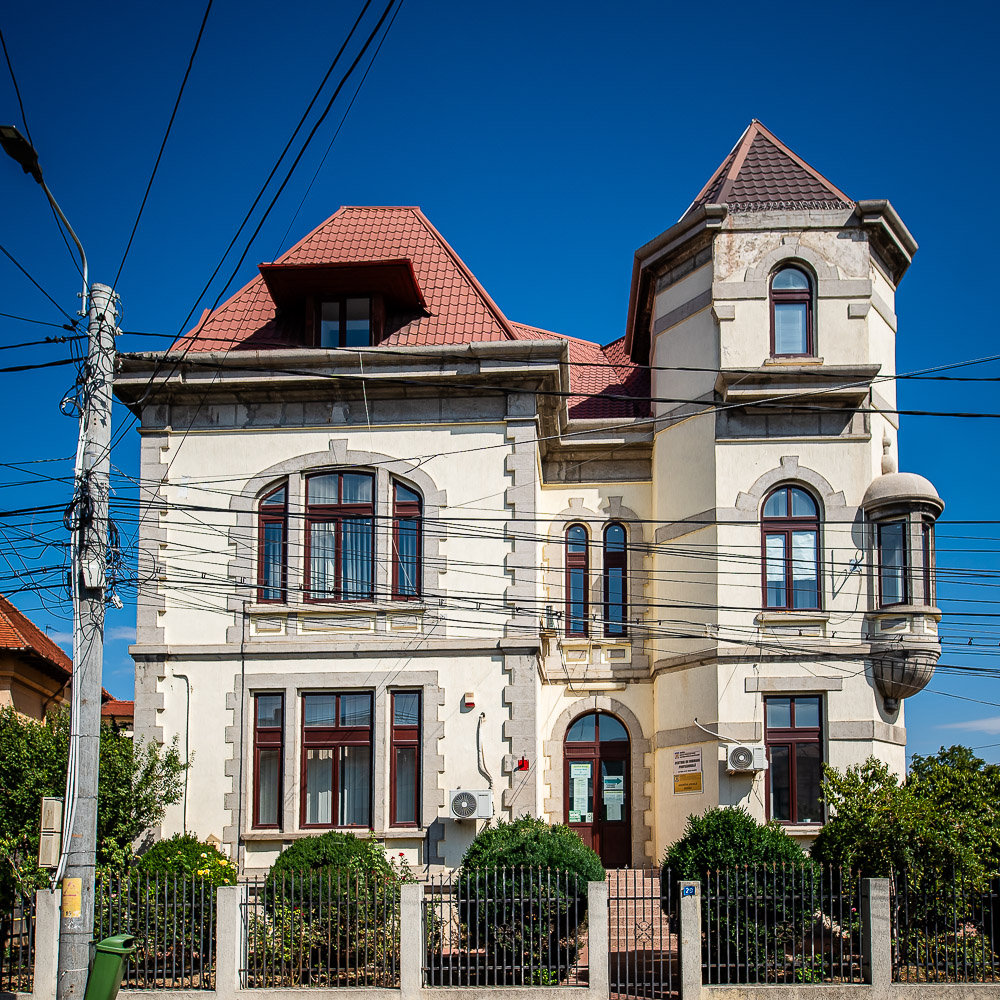
Buzău Prefecture (White House)
September 2, 2024
Luiza Villa 2
September 2, 2024English
LUIZA VILLA 1
The castle, built in 1912, belonged to the administrator of the Buzău-Nehoiașu railway. In 1907, the Marmorosch Blank – Anonymous Society Bank contracted from the Ministry of Public Works the construction of the railway line Buzău - Nehoiașu. It was given for execution to the Weiss-Vasilescu enterprise, which completed the work in 1909, and it was put into use on the 9th of August of the same year. For the purpose of its administration and exploitation, the Romanian Company of the Buzău–Nehoiaşu Railway was established, a joint-stock company whose shareholders were several Romanian businessmen.
With a length of 72 kilometers, the railway was used for the transport of goods, especially for the transport of timber from Nehoiu, but also for the transport of passengers. The terminus of this line in Buzău was first the Drăgaica Station, inaugurated in 1909, located 1 kilometer west of the city's main station. Later, the line was extended to Buzău station, and in 1942 a special platform was built for this line, today line 20 of Buzău Station, still used exclusively for departures and arrivals of passenger trains to Nehoiașu.
After the War of National Integration (1916-1919), the possibility of extending this line and connecting it with the Braşov – Întorsura Buzăului line was discussed. This would have meant the creation of a new Transcarpathian railway, as an alternative to the one on Valea Prahovei, which would have vitalized the economic activity of the area, especially by shortening the connection with the Danube ports Brăila and Galaţi. The project, although it was started, with the construction of the Braşov - Întorsura Buzăului railway and the construction of the Teliu tunnel, the longest railway tunnel in Romania (4379 meters), was not completed. The 40 kilometers that should have connected Întorsura Buzăului with Nehoiașu were not continued.
After the Second World War, the railway company was nationalized, and the Buzău - Nehoiaşu railway line remained a simple one, it was not doubled or electrified, and passenger trains continued to run on it, as the main connecting route for the inhabitants of Buzau valley.




